Table of Contents
What Is Season Salt?
Season salt is a versatile blend of salt and spices designed to enhance flavor in cooking. Unlike plain table salt, it combines sodium chloride with herbs, spices, and seasonings for immediate taste improvement. For example, sprinkle it on grilled chicken for a savory crust or toss with roasted potatoes for restaurant-quality results. This guide provides practical, tested applications for everyday cooking.
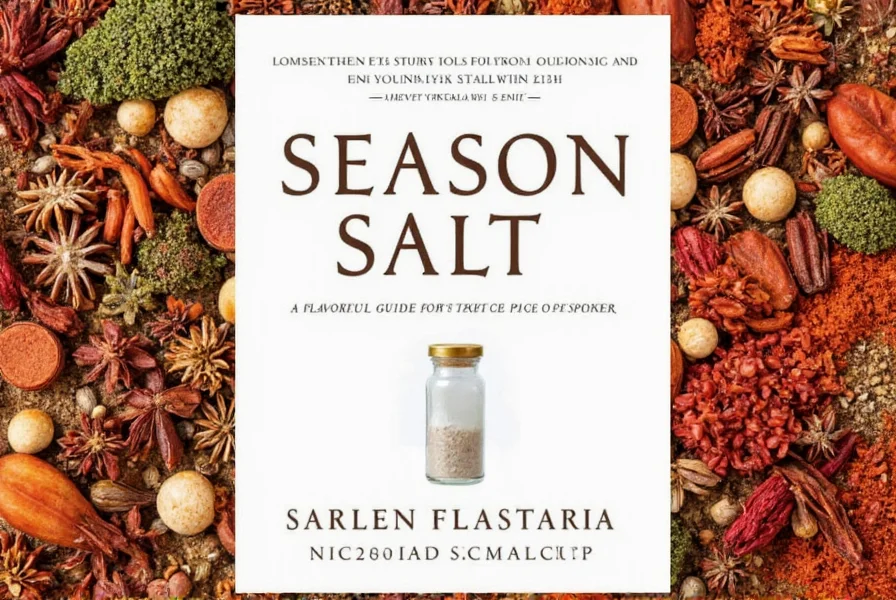
Season salt originated from traditional spice blends worldwide, such as Chinese five-spice or Italian herbs. Modern versions simplify flavoring without needing multiple jars—ideal for quick meals or beginners.
Types of Season Salt
Season salt varieties differ in spice profiles. Here are key types with exact ingredient ratios for consistency:
- Classic Season Salt: 70% salt, 15% garlic powder, 10% onion powder, 5% paprika. Perfect for meats and vegetables.
- Cajun Seasoning: 50% salt, 20% cayenne pepper, 15% thyme, 10% oregano, 5% cumin. Best for spicy dishes like gumbo or jambalaya.
- Mexican Seasoning: 60% salt, 20% chili powder, 10% cumin, 10% garlic powder. Ideal for tacos, fajitas, or grilled corn.
- Herb-Infused Season Salt: 65% salt, 15% rosemary, 10% thyme, 10% parsley. Great for fish, chicken, or roasted potatoes.
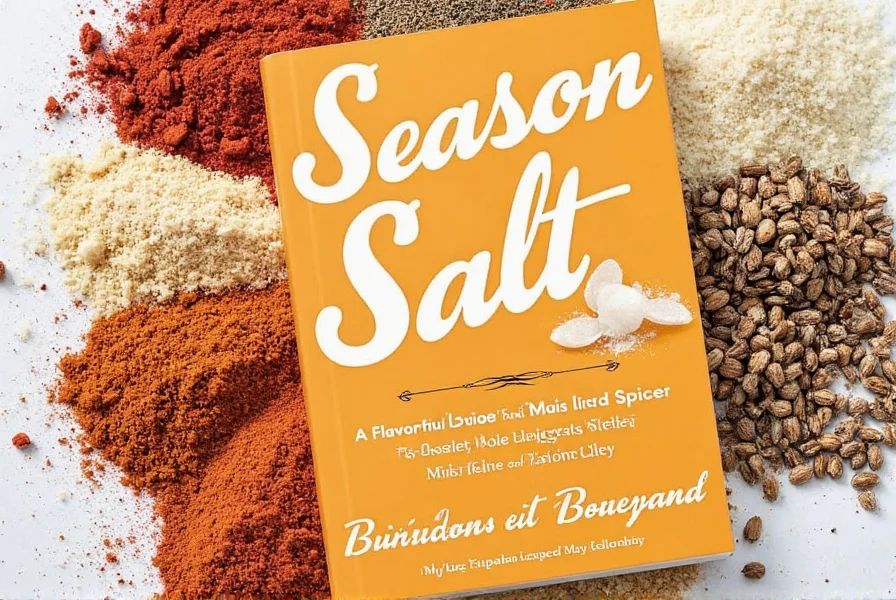
Each blend targets specific cuisines. For instance, Cajun seasoning adds heat to seafood, while Herb-Infused works best with delicate proteins like salmon.
How to Use Season Salt
Follow these tested methods for optimal flavor:
- For Chicken: Mix 1 tsp season salt with 1 tbsp olive oil. Coat chicken breasts, bake at 375°F for 25 minutes. This creates crispy skin with even seasoning.
- For Roasted Vegetables: Toss 2 cups chopped veggies (e.g., carrots, broccoli) with 1 tsp season salt and 1 tbsp olive oil. Roast at 400°F for 20-25 minutes until caramelized.
- For Steak: Rub 1.5 tsp season salt per pound of steak 30 minutes before cooking. Sear in a hot skillet for perfect crust and depth.
- For Soups and Stews: Add 1/2 tsp per serving at the end of cooking to avoid over-salting. Enhances broth without overpowering.
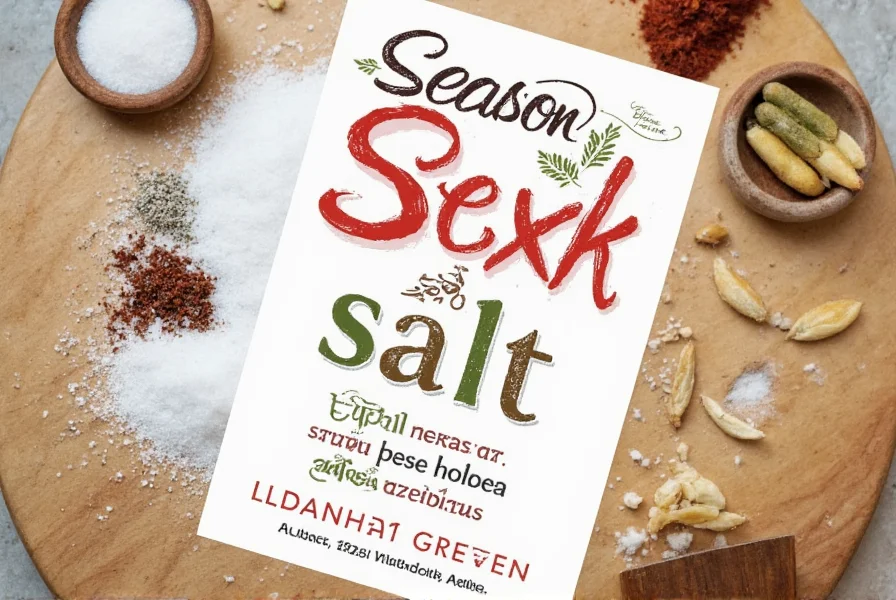
Always start with less—season salt contains salt, so adjust gradually. For sensitive palates, use 50% of the recommended amount initially.
Buying Guide for Season Salt
Ingredients
Check for natural ingredients: avoid artificial additives like MSG or synthetic colors. Opt for blends with whole spices (e.g., real garlic powder, not artificial flavors). Example: McCormick’s classic blend uses 100% natural ingredients with no preservatives.
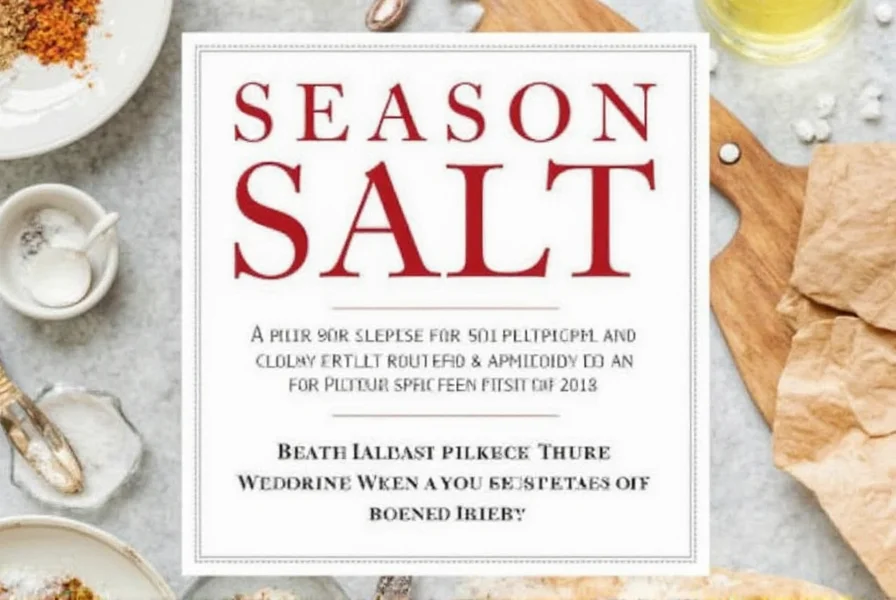
Flavor Profile
Match blends to your dishes:
- Spicy dishes: Choose Cajun (cayenne-based) or Mexican (chili powder-based)
- Delicate proteins: Use Herb-Infused (rosemary/thyme) for chicken or fish
- General-purpose: Classic Season Salt for meats, potatoes, or eggs
Brand Comparison
| Brand | Key Ingredients | Sodium per 1/4 tsp | Best Use Case | Price (1.5 oz) |
|---|---|---|---|---|
| McCormick | Salt, garlic, onion, paprika | 480mg | General cooking, baking | $2.99 |
| Peters | Salt, cumin, chili, black pepper | 520mg | Meat rubs, grilled foods | $3.49 |
| Kraft | Salt, onion, garlic, paprika | 450mg | Quick meals, snacks | $1.99 |
Use Cases
Grind size matters:
- Fine grind: For sauces, dressings, or baking (e.g., McCormick)
- Coarse grind: For meat rubs or finishing dishes (e.g., Peters)
Target Audience
- Home cooks: Use pre-blended season salt to save time—no need for multiple spice jars.
- Professional chefs: Custom blends for consistent flavor in high-volume cooking.
- Diet-conscious users: Low-sodium versions available (e.g., 30% less sodium than standard).
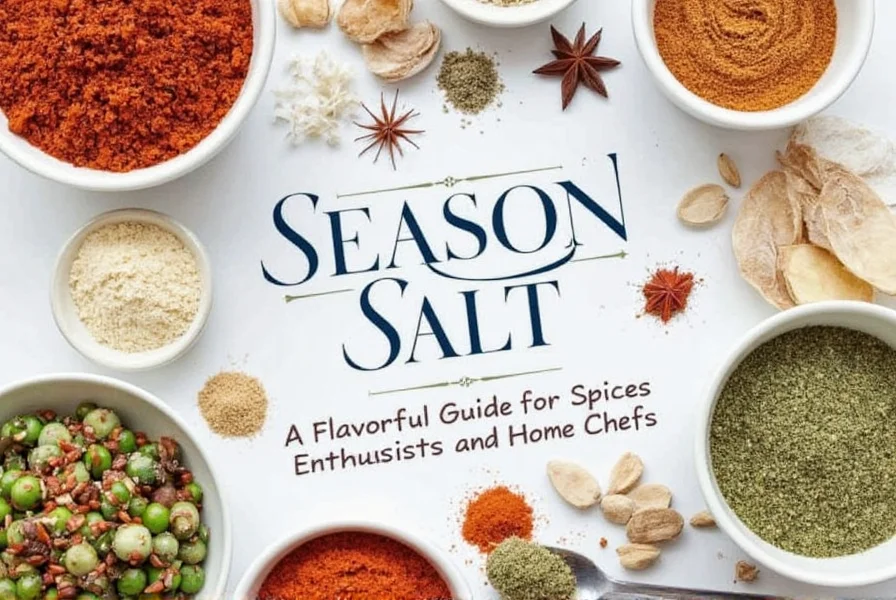
Season Salt vs. Other Salts
| Feature | Season Salt | Table Salt | Sea Salt | Kosher Salt |
|---|---|---|---|---|
| Flavor | Spiced (garlic, pepper, herbs) | Neutral | Mineral-rich, subtle | Flaky, mild |
| Sodium per 1/4 tsp | 450-520mg | 575mg | 400mg | 480mg |
| Best Usage | Marinades, roasted dishes, finishing | Baking, general seasoning | Finishing dishes, salads | Curing, brining |
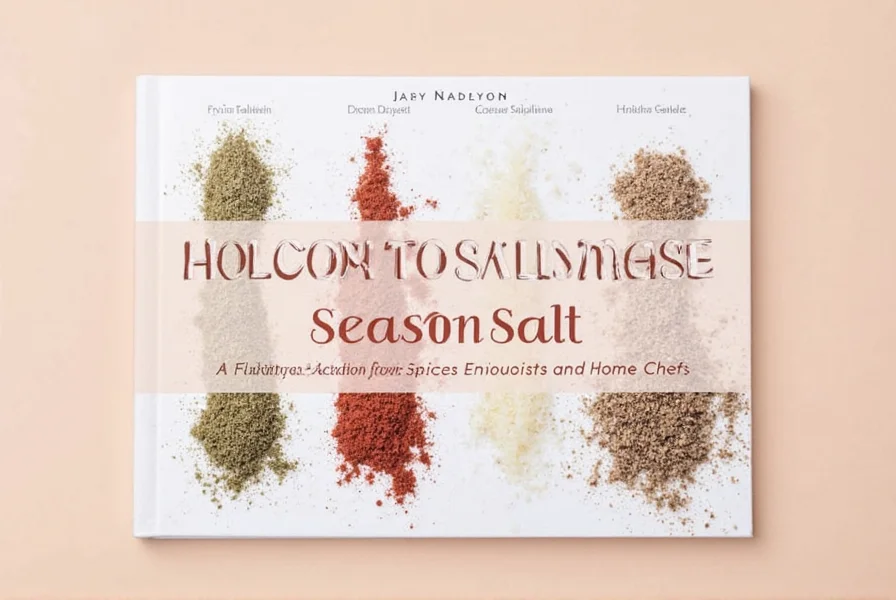
Season salt provides instant flavor complexity—use it alongside other salts for layered taste. For example, add sea salt during cooking and season salt as a finishing touch.
Creative Uses for Season Salt
Go beyond basics with these expert-tested ideas:
- Popcorn: Toss 4 cups popped corn with 1 tsp season salt and 1 tbsp melted butter. Add a pinch of cayenne for extra heat.
- French Fries: Mix 2 tsp season salt with 1 tsp olive oil. Coat fresh fries and bake at 425°F for 15 minutes for crispy edges.
- Salad Dressing: Whisk 1/2 tsp season salt into 2 tbsp lemon juice and 3 tbsp olive oil for zesty vinaigrette.
- Cocktails: Rim glasses with season salt for margaritas or bloody marys—use coarse grind for texture.
- Homemade Chips: Slice potatoes thin, toss with 1 tsp season salt and 1 tbsp oil. Bake at 400°F for 18 minutes until crisp.
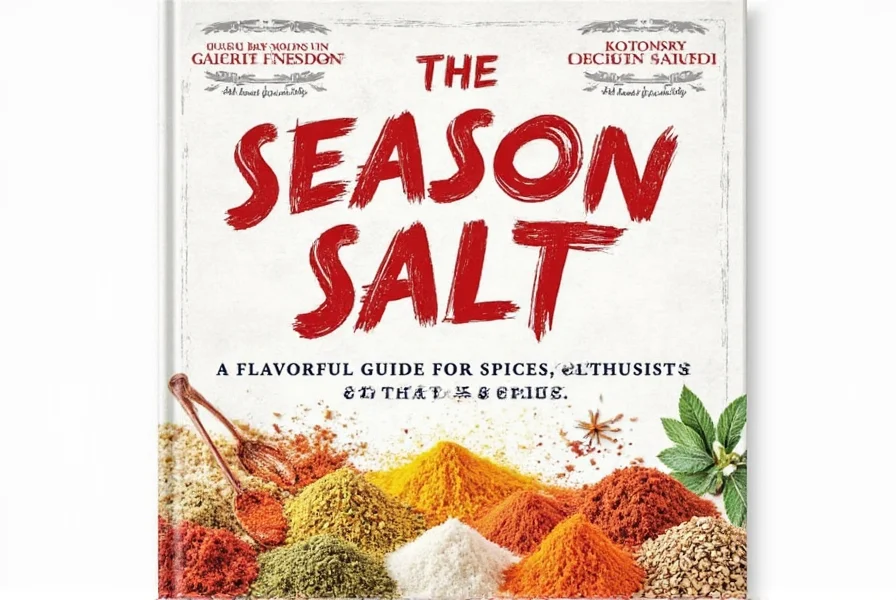
For vegetarian dishes, try season salt on roasted cauliflower or tofu. It adds umami without meat-based ingredients.
Frequently Asked Questions About Season Salt
What is the sodium content of season salt per serving?
Standard season salt contains 450-520mg sodium per 1/4 teaspoon. Low-sodium versions have 30% less (315-365mg). For reference, the American Heart Association recommends under 1,500mg daily sodium for most adults. Use season salt sparingly in recipes to stay within limits.
Can I use season salt for vegetarian or vegan dishes?
Absolutely. Most season salt blends are vegan (check labels for dairy or animal products). Use it on roasted vegetables, tofu, lentils, or avocado toast. For umami depth, mix with nutritional yeast. Avoid blends containing whey or casein if vegan.
How do I make low-sodium season salt at home?
Combine 1 part salt substitute (potassium chloride), 1 part garlic powder, 1 part onion powder, and 1 part paprika. Add 1/2 part dried herbs like thyme. Store in an airtight container. This reduces sodium by 50% while maintaining flavor.
Why does my season salt clump in humid weather?
Moisture causes clumping. To prevent this, store in a cool, dry place with a silica gel packet or uncooked rice grain. Commercial brands use anti-caking agents (e.g., calcium silicate), but homemade versions need extra care. If clumped, sift through a fine mesh strainer before use.
Is season salt better than regular salt for health?
Not inherently healthier—both contain sodium. However, season salt’s added spices allow you to use less overall salt while achieving more flavor. For example, 1/2 tsp season salt can replace 1 tsp regular salt in recipes. Choose low-sodium options if monitoring intake, and avoid blends with artificial additives.
What’s the best season salt for steak?
For steak, use Peters or a coarse-grind Cajun blend. Apply 1.5 tsp per pound 30 minutes before cooking. The cayenne and cumin enhance charred flavors without overpowering. Avoid herb-infused blends (they burn easily at high heat). For rare steaks, add a pinch after cooking for freshness.
Conclusion
Season salt transforms simple dishes into flavorful meals with minimal effort. By understanding its types, sodium content, and specific uses—like the steak rub or roasted vegetable technique—you can maximize taste while controlling salt intake. Experiment with blends to find your perfect match, and always prioritize natural ingredients for the best results.
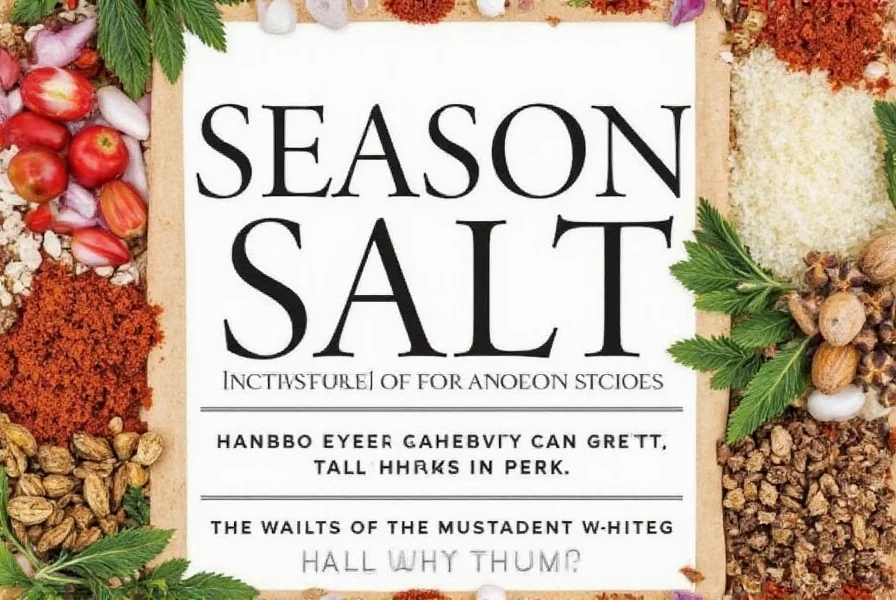
Remember: Start with less, taste as you go, and let the spices do the work. Whether you’re cooking for one or a crowd, season salt is a kitchen essential that delivers professional results every time.

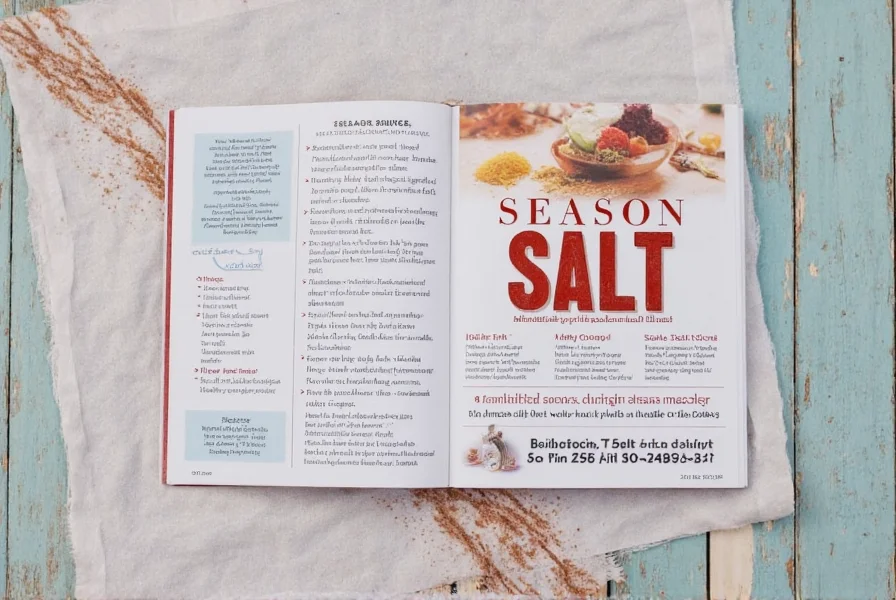









 浙公网安备
33010002000092号
浙公网安备
33010002000092号 浙B2-20120091-4
浙B2-20120091-4